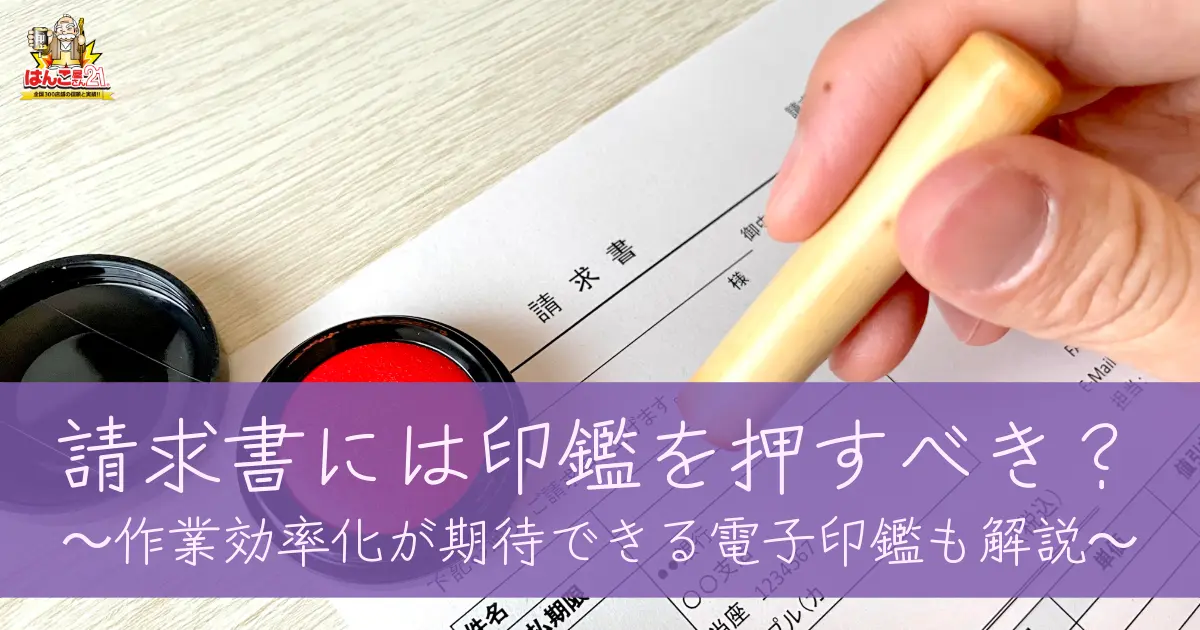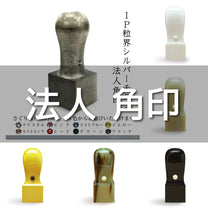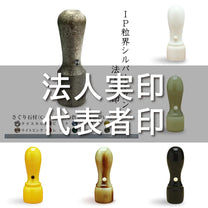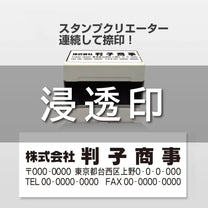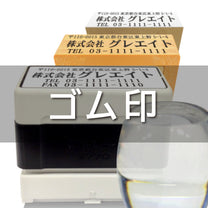Invoices are important documents used when billing business partners for goods or services provided. Some people may wonder, "Do I need a HANKO on an invoice?" When dealing with invoices in the future, it is essential to know the necessity of a HANKO and how to stamp it. The relationship between invoices and HANKO is not complicated, so it's a good idea to take this opportunity to learn about it. In this article, we will introduce "stamping a HANKO on an invoice." We will also explain electronic HANKO that are a good match for invoices, so please use this as a reference.
- Review the basic points of invoices
- The invoice serves two purposes
- A HANKO on the invoice is not necessarily required.
- What is the appropriate HANKO to use on an invoice?
- Points to note when using a HANKO on an invoice
- Benefits of using electronic HANKO on invoices
- Disadvantages of using electronic HANKO on invoices
- summary
- Related products
Review the basic points of invoices
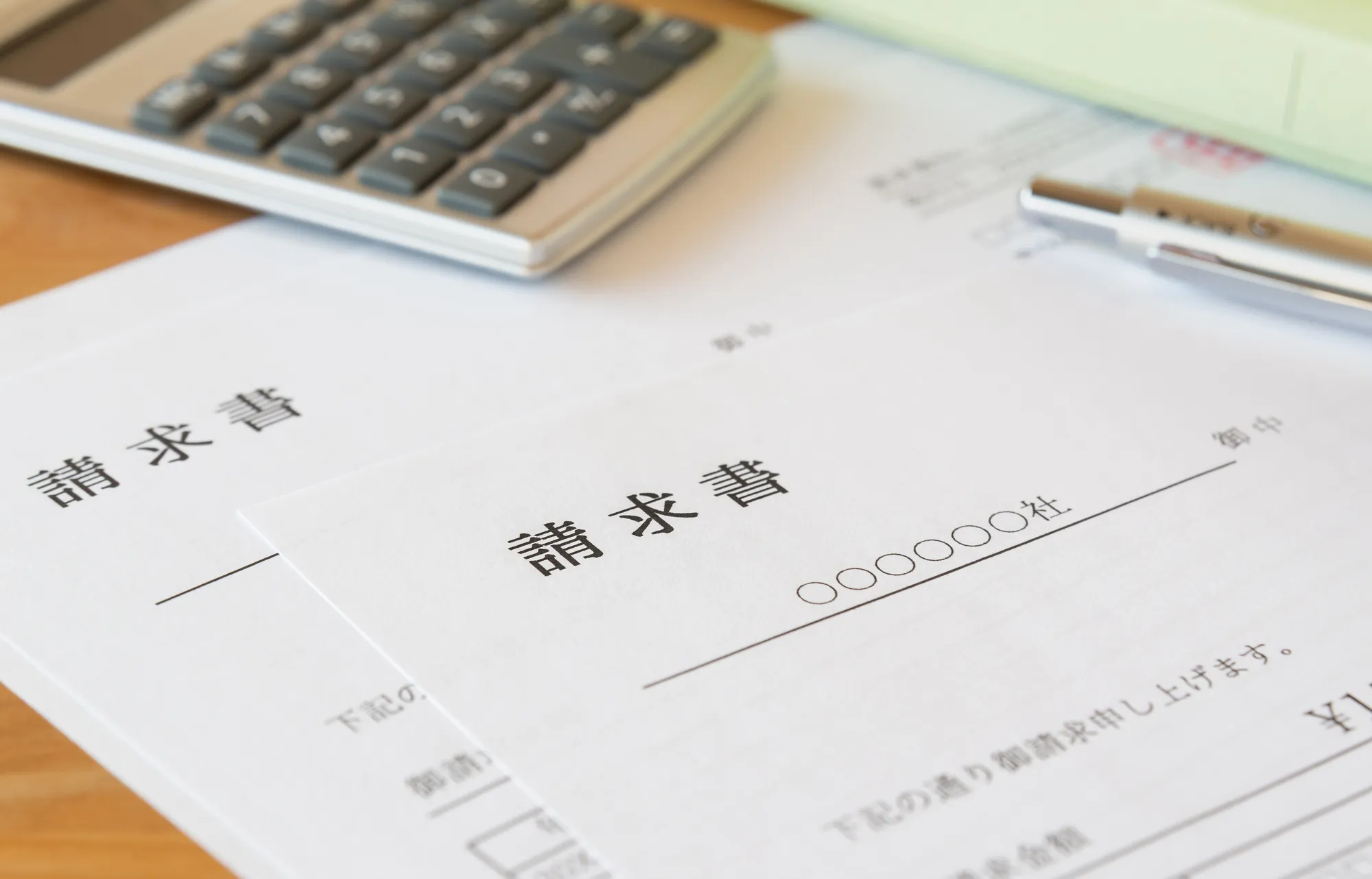
An invoice is a document issued to request payment for services, products, etc. Copies of invoices and invoices received are required to be kept for a certain period of time as national tax-related documents.
There is no set format for invoices, so you can create them freely. You can create them by hand, using software, or any other method. However, in order for your business partner to receive input tax deductions, make sure to create an invoice that includes the necessary items.
In addition, the invoice system will be implemented from October 2023, and additional required items will be added. When an invoice issuing business issues a qualified invoice, it is mandatory to issue and store documents that meet the requirements of the Consumption Tax Act, regardless of the amount.
The invoice serves two purposes
The invoice has two main functions:
- Role of communicating invoice amounts to business partners
- Informing business partners of payment destinations and deadlines
We will explain each one in detail.
Role of communicating invoice amounts to business partners
The role of an invoice is to communicate the amount invoiced to the business partner. As a national tax-related document, it also has the role of clarifying the invoice amount based on the calculation of income amount. It is also used as a basis for consumption tax input deduction.
Informing business partners of payment destinations and deadlines
Invoices have the role of informing business partners of payment destinations and deadlines. They make it easier to ensure smoother payment than communicating billing details verbally or through messages. Invoices also have legal effect, so they can be presented as proof of transaction in the event of a lawsuit or other trouble.
A HANKO on the invoice is not necessarily required.
It is not always necessary to HANKO on the invoice. With that in mind, please check the following points.
- Putting a HANKO on an invoice increases credibility
- Fill in the items that should be included on the invoice even if you do not affix a HANKO
We will explain each one in detail.
Putting a HANKO on an invoice increases credibility
Although it is not mandatory to stamp an invoice, by stamping it, it is legally presumed that the invoice was officially issued by the company that stamped the HANKO. Therefore, stamping an HANKO increases its credibility. Since invoices are more trustworthy than invoices without a HANKO, it is not uncommon for a HANKO to be stamped on an invoice.
However, since it is only possible to guess which company issued the invoice, if the HANKO is forged it will be invalid. However, since forging an invoice with a HANKO carries heavy prison sentences and fines, fraud involving HANKO is rare.
This deterrent effect of the punishment is also one of the reasons why stamping HANKO increases trust. Also, stamping invoices has long been a custom, so some companies require stamping invoices.
Write down the items that should be included on the invoice even if you don't affix a HANKO.
Although it is not mandatory to HANKO an invoice, there are certain items that must be included on the invoice. Please refer to the following for the items that must be included on a qualified invoice.
- Name of issuing company
- Date of transaction
- Transaction contents
- Tax-included price
- Name of the invoice recipient
If a business partner requests a qualified invoice, the party that is requested is obligated to issue the invoice. Also, if there are any defects in the content of the issued document, you will be asked to remake it, so be sure to remember to fill in the above items.
What is the appropriate HANKO to use on an invoice?
Regarding the HANKO to be used on the invoice, please check the following points.
- Square seals are generally used on HANKO.
- Generally, representative seals and bank seals are not used.
- Printed HANKO can also be used
- Differences between personal HANKO prepared by sole proprietors and freelancers
We will explain each one in detail.
Square seals are generally used on HANKO.
The HANKO used on invoices is generally a square seal. A square seal is a HANKO with the company name on it. Although it does not require HANKO, it can be used by the issuer of the document to recognize it as a company document. For this reason, square seals are generally used for stamping invoices.
Representative seals and bank seals are used for other important occasions, so it is inappropriate to use them to stamp invoices. If possible, you should use a square HANKO, but if one is not available, a rubber stamp or ink-permeable stamp can be used instead.


Generally, representative seals and bank seals are not used on invoices.
When stamping an invoice, the representative seal or bank seal is generally not used.
The representative seal is the official seal registered with the Legal Affairs Bureau when the corporation was established. The seal has the title "Representative Director Seal" in the center and the company name engraved around it. It is used for signing contracts and submitting application documents, so it is not used for creating invoices.
On the other hand , a bank seal is a HANKO that is registered with a financial institution when opening an account. It is used for deposits, withdrawals, and issuing bills and checks, so like the representative seal, it is not used on invoices. A square seal is generally used to create invoices.
Printed HANKO can also be used
There is no problem with using a printed HANKO to stamp an invoice. In fact, in some cases, companies that issue multiple invoices on a daily basis use a printed HANKO instead of a registered seal.
Since the HANKO to be used on an invoice is not specified by law, a printed HANKO has the same legal effect as a registered seal. However, some companies prohibit the use of printed HANKO.
When using a printed HANKO, be sure to check whether the other person can use it.
Hanko Shop 21's slip printing service also allows you to print square stamps in vermilion. You can also use the electronic HANKO service to create seal impressions for use in office software, PDFs, and electronic contract services.
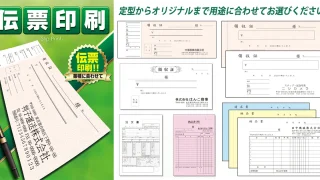
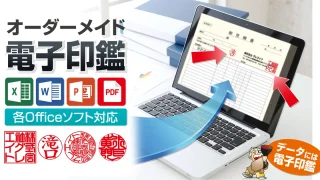
Differences between personal HANKO prepared by sole proprietors and freelancers
Please refer to the following for the differences between the HANKO required by sole proprietors and freelancers.
| HANKO you should prepare | |
| Sole proprietor with a business name |
|
| Individual business owners and freelancers without a trade name |
|
The representative seal is generally a double circle with the representative's name engraved in the inner circle and the company name engraved in the outer circle. When signing a formal contract, the representative seal is required to show trustworthiness.
In cases where a bank has a trade name, a bank seal with a double circle and the HANKO"Bank Seal" written on the inside is used. This HANKO is essential for opening a savings account and for making deposits and withdrawals in business.
Square seals are used to stamp invoices and other documents. If you are a sole proprietor or freelancer without a trade name, a round seal with your personal name engraved on it and a bank seal are sufficient. If you have a trade name, it is safe to prepare a square seal with the company name or trade name written on it as well.


Points to note when using a HANKO on an invoice
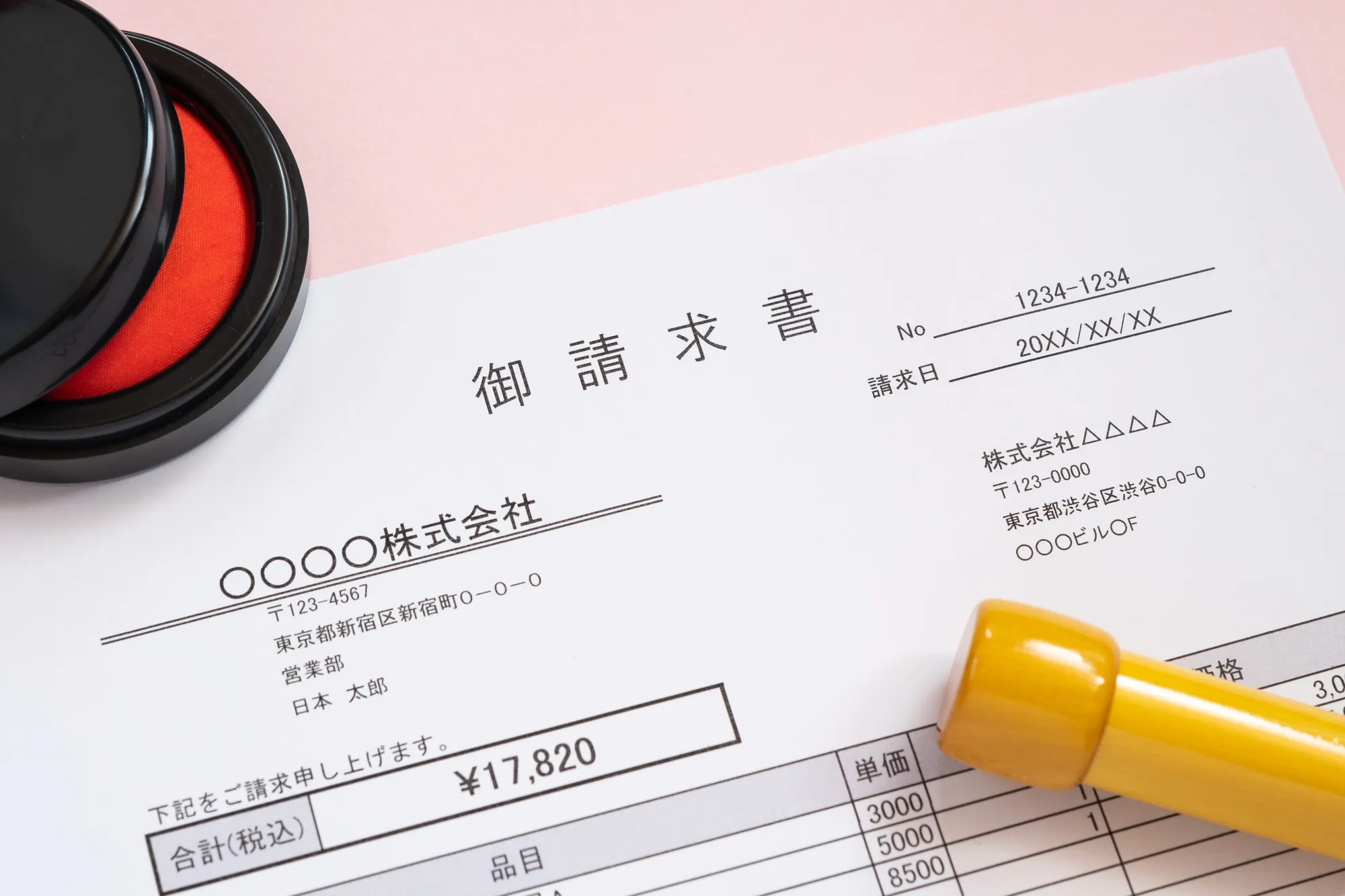
When using a HANKO on an invoice, please keep the following points in mind:
- When HANKO, do not completely hide the company name
- If you stamp the HANKO in the wrong way, it may become unusable as evidence.
- Do not use correction marks
We will explain each one in detail.
When HANKO, do not completely hide the company name
When stamping an HANKO, do not completely hide the company name. Stamp so that it covers part of the company name. When stamping, be sure to stamp to the right.
If you stamp the HANKO in the wrong way, it may become unusable as evidence.
If you stamp an HANKO in the wrong way, it may become unusable as evidence. It is wrong to stamp the invoice so that the company name is completely hidden, and it is also wrong to stamp the HANKO so that the stamp is faint or misaligned.
In the unlikely event of a problem, you may be required to present the invoice as evidence, so be sure to stamp it correctly.
Do not use correction marks
Correction stamps are not allowed on invoices. Stamps are not used on invoices for any other purpose than to stamp the invoice name after the invoicer's name to increase credibility. In addition to correction stamps, double lines, correction tape, and correction fluid are also not allowed.
If you discover a mistake when creating an invoice, recreate it correctly and reissue it. Since rewriting everything by hand is time-consuming, try to use a computer or invoice issuing system to make it easy to reissue the invoice.
Benefits of using electronic HANKO on invoices
The benefits of using an electronic HANKO on invoices are as follows:
- Increased work efficiency
- Going paperless can reduce costs
We will explain each one in detail.
Increased work efficiency
Using an electronic HANKO on an invoice can improve work efficiency. Normally, the document is printed and then stamped. However, this is not very efficient because it takes time to print and stamp.
With an electronic HANKO, a digitalized HANKO is stamped on electronically created documents. Therefore, its advantage is that it requires significantly less effort than stamping in the usual way.
Going paperless can reduce costs
By introducing electronic HANKO, you can expect to reduce costs by going paperless. Introducing electronic HANKO means that documents to be stamped will also be digitized. As a result, you will no longer need printers, paper, ink, etc. to print documents, which will significantly reduce running costs.
Even if there are any errors in the documents, the data is digitized so they can be corrected on a computer. For invoices with electronic HANKO, both parties can complete the process of approval and contracts digitally, eliminating the need to affix stamps or send by mail.
In addition, because the document data is digitized, there is no need for storage space like in a cabinet. Another attractive feature is that you don't have to search through a huge amount of documents to find the document you are looking for, and you can easily access the document data you need by accessing it online.
As described above, the introduction of electronic HANKO will promote paperless operations, which will lead to savings in running costs and improved work efficiency.
Disadvantages of using electronic HANKO on invoices
Using an electronic HANKO on an invoice has the following disadvantages:
- The introduction of electronic HANKO requires effort.
- The prevalence is low and it may not be recognized.
We will explain each one in detail.
The introduction of electronic HANKO requires effort.
Introducing electronic HANKO requires changes to business processes, which may involve a great deal of effort. Because it is a major change to the rules for approval and authorization, it may take some time for it to take root within the company.
In addition, if many documents are to be digitized with the introduction of electronic HANKO, a large amount of resources will have to be allocated to preparation. Therefore, it is true that the introduction of electronic HANKO is not an easy task.
The prevalence is low and it may not be recognized.
Another disadvantage of electronic HANKO is that they are not widely used. Hanko culture is widespread in Japan, and many people think that "it is unthinkable to use a seal other than a registered seal." Depending on the business partner, there are cases where the use of electronic HANKO is not permitted when a seal is required for a contract or other purpose.
However, it is said that if legal reforms related to digital books continue, the low penetration rate of electronic transactions and electronic HANKO will be resolved. With an eye to the future, introducing electronic HANKO, even if only partially, is one option.
summary
This time, we explained about stamping HANKO. Invoices are valid even without stamps, but invoices with stamps are considered more reliable. In the unlikely event that a dispute arises and a lawsuit occurs, stamps should be used as reliable evidence, so stamps should be used if possible.
If you find it troublesome to stamp invoices, you can use an electronic HANKO. Since you only need to stamp an electronic invoice, it is less time-consuming than stamping a regular invoice. It also contributes to a paperless system, which can help improve business efficiency and reduce running costs.
If you want to make it easier to stamp invoices, take this opportunity to consider introducing an electronic HANKO.
 日本語
日本語 English
English 简体中文
简体中文 繁體中文
繁體中文 한국어
한국어 ไทย
ไทย Tiếng Việt
Tiếng Việt Indonesia
Indonesia Français
Français Español
Español Português
Português
